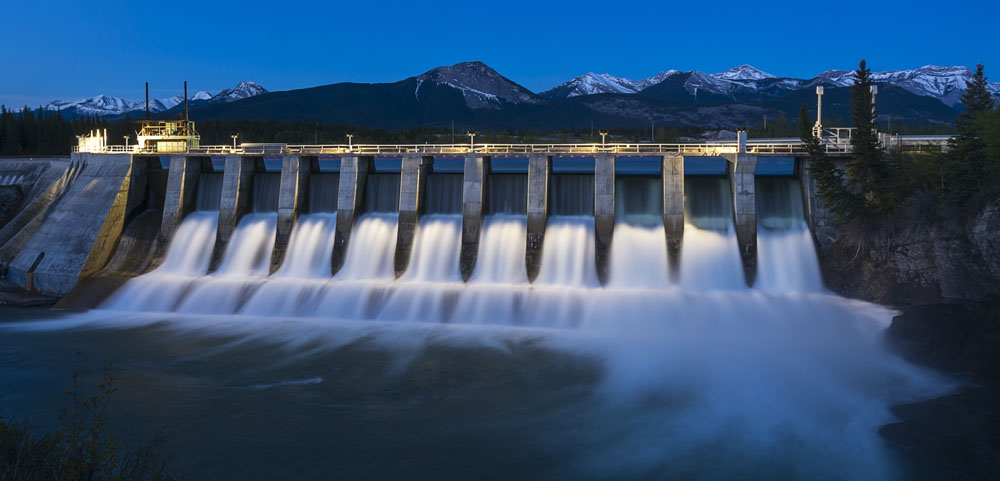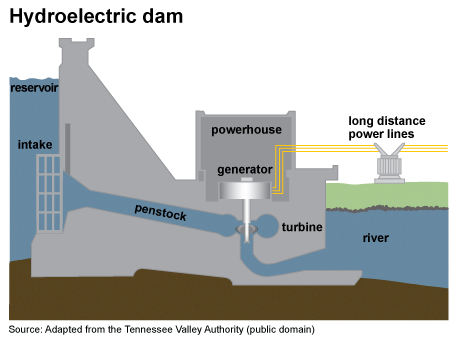Hydropower: Energy from Water
As the world continues to transition towards renewable energy sources, hydropower stands out as one of the most reliable and long-standing forms of energy generation. With the ability to harness the power of moving water, hydropower has been a key player in the global energy landscape for centuries. This article will explore the fundamentals of hydropower, how it works, its benefits, challenges, and the role it plays in the modern energy market.

What is Hydropower?
Hydropower, also known as hydroelectric power, is the process of generating electricity from the movement of water. It is one of the oldest and most widely used sources of renewable energy. Hydropower uses water flow, usually from rivers or reservoirs, to turn turbines, which generate electricity.
How Does Hydropower Work?
The core principle behind hydropower is the transformation of kinetic energy from moving water into mechanical energy, which is then converted into electrical energy. Here’s a step-by-step breakdown of how it works:
- Water Flow: A river or reservoir provides the necessary water source. The water is directed towards a dam, which controls and regulates the flow.
-
Dam and Reservoir: A dam is built to create a reservoir, allowing water to accumulate and maintain a consistent flow. When needed, the water is released from the reservoir, flowing through a penstock (a large pipe) towards the turbine.
-
Turbine: The flowing water passes through the turbine, causing it to spin. This mechanical motion is the core of the process, as it transfers kinetic energy from the water to the turbine.
-
Generator: The turbine is connected to a generator. As the turbine spins, it turns the generator, converting the mechanical energy into electrical energy.
-
Transmission: The electrical energy is then transmitted through power lines to homes, businesses, and industries.

Types of Hydropower Systems
There are three main types of hydropower systems:
- Impoundment Systems: These systems use a dam to store water in a reservoir. The stored water is released as needed to generate electricity. The majority of hydropower plants worldwide fall into this category.
-
Diversion Systems: Also known as run-of-river systems, these do not require a dam. Instead, they divert a portion of the river’s flow through a canal or penstock to generate electricity.
-
Pumped Storage Systems: These systems act like a battery. Water is pumped to an upper reservoir during periods of low electricity demand and released to generate power during periods of high demand.
Benefits of Hydropower
Hydropower has several key advantages that make it an attractive energy option:
1. Renewable and Sustainable
Hydropower is a renewable energy source, meaning it is not depleted when used. Water is naturally replenished through the water cycle, ensuring a consistent supply of energy. Unlike fossil fuels, which are finite, water will always be available to generate power.
2. Low Emissions
Hydropower is one of the cleanest sources of energy available. It produces no greenhouse gas emissions during operation, helping to combat climate change. The primary environmental impact of hydropower comes from the construction of dams and the displacement of ecosystems, but the energy produced is far cleaner than fossil fuels.
3. Reliable and Consistent
Unlike some other renewable sources, such as solar or wind, which are intermittent, hydropower can provide a constant and reliable source of electricity. As long as there is a steady flow of water, a hydropower plant can operate continuously.
4. Flexible and Scalable
Hydropower plants can be designed to meet a range of energy needs, from small-scale community projects to massive, grid-connected power plants. Additionally, pumped storage systems provide a way to store energy and balance the grid, making hydropower a flexible energy solution.
Challenges of Hydropower
While hydropower offers many benefits, it is not without its challenges. Here are some of the key concerns associated with hydropower:
1. Environmental Impact
The construction of large dams can have significant environmental impacts. Dams can disrupt local ecosystems, alter river flows, and lead to the displacement of communities and wildlife. The flooding of large areas of land behind the dam can affect plant and animal species, making careful planning and environmental impact assessments critical.
2. High Initial Costs
Building a hydropower plant, especially a large-scale impoundment system, requires a significant initial investment. The cost of construction, land acquisition, and permitting can be high. However, once operational, hydropower plants are relatively low-cost to maintain.
3. Climate Change and Water Availability
Hydropower relies on water availability, and climate change is expected to affect rainfall patterns in many regions. In areas where water resources are becoming less predictable, hydropower may face challenges in maintaining a consistent energy output.
Hydropower’s Role in the Global Energy Mix
Hydropower is already a major source of renewable energy worldwide. According to the International Renewable Energy Agency (IRENA), hydropower accounted for approximately 16% of global electricity generation in 2020. It is the largest source of renewable energy in the world, ahead of wind and solar.
Hydropower’s Contribution to Clean Energy Goals
As countries set ambitious climate goals and aim to reduce greenhouse gas emissions, hydropower plays a crucial role in achieving those objectives. In regions like Norway, Canada, and Brazil, hydropower already provides a significant share of the energy mix, helping these countries reduce their reliance on fossil fuels.
The Future of Hydropower
While traditional hydropower continues to be a reliable and valuable source of energy, the industry is also evolving. New technologies and innovations are making hydropower more efficient and less environmentally invasive. Some exciting developments include:
- Smaller, low-impact hydro projects: These projects focus on minimizing environmental disruption by reducing dam size and using run-of-river systems.
- Hydropower and energy storage: The integration of pumped storage systems with other renewable energy sources, such as wind and solar, can help stabilize the grid and provide dispatchable power.
- Advanced turbine designs: New turbine technologies, such as fish-friendly turbines, aim to reduce the environmental impact of hydropower and protect local wildlife.
FAQs About Hydropower
1. How does hydropower help combat climate change?
Hydropower produces no greenhouse gas emissions during electricity generation, making it a key tool in reducing the overall carbon footprint of the energy sector. By replacing fossil fuel-based power plants with hydropower, countries can significantly cut down on their CO2 emissions.
2. Can hydropower be used in small-scale applications?
Yes, hydropower is highly versatile and can be adapted for small-scale projects. Micro-hydropower systems can provide power to remote communities or off-grid areas, offering a reliable and sustainable energy source.
3. What are the environmental impacts of hydropower?
While hydropower is a clean energy source, it can have environmental impacts, particularly the construction of large dams. These impacts include ecosystem disruption, fish migration barriers, and land flooding. However, modern technologies are being developed to minimize these effects.
4. Is hydropower expensive to install?
The initial costs of building a hydropower plant can be high, particularly for large-scale projects. However, once operational, hydropower plants are relatively cost-effective to maintain and can generate electricity for decades.
Conclusion
Hydropower remains one of the most efficient, reliable, and sustainable sources of renewable energy available today. With its ability to provide constant power and its minimal environmental impact once operational, hydropower plays a critical role in our transition to a cleaner, greener energy future. As technology improves and new methods of reducing environmental impact emerge, hydropower will continue to be a cornerstone of the global energy landscape.

By harnessing the power of moving water, we can create a more sustainable and resilient energy system, ensuring a cleaner future for generations to come.

